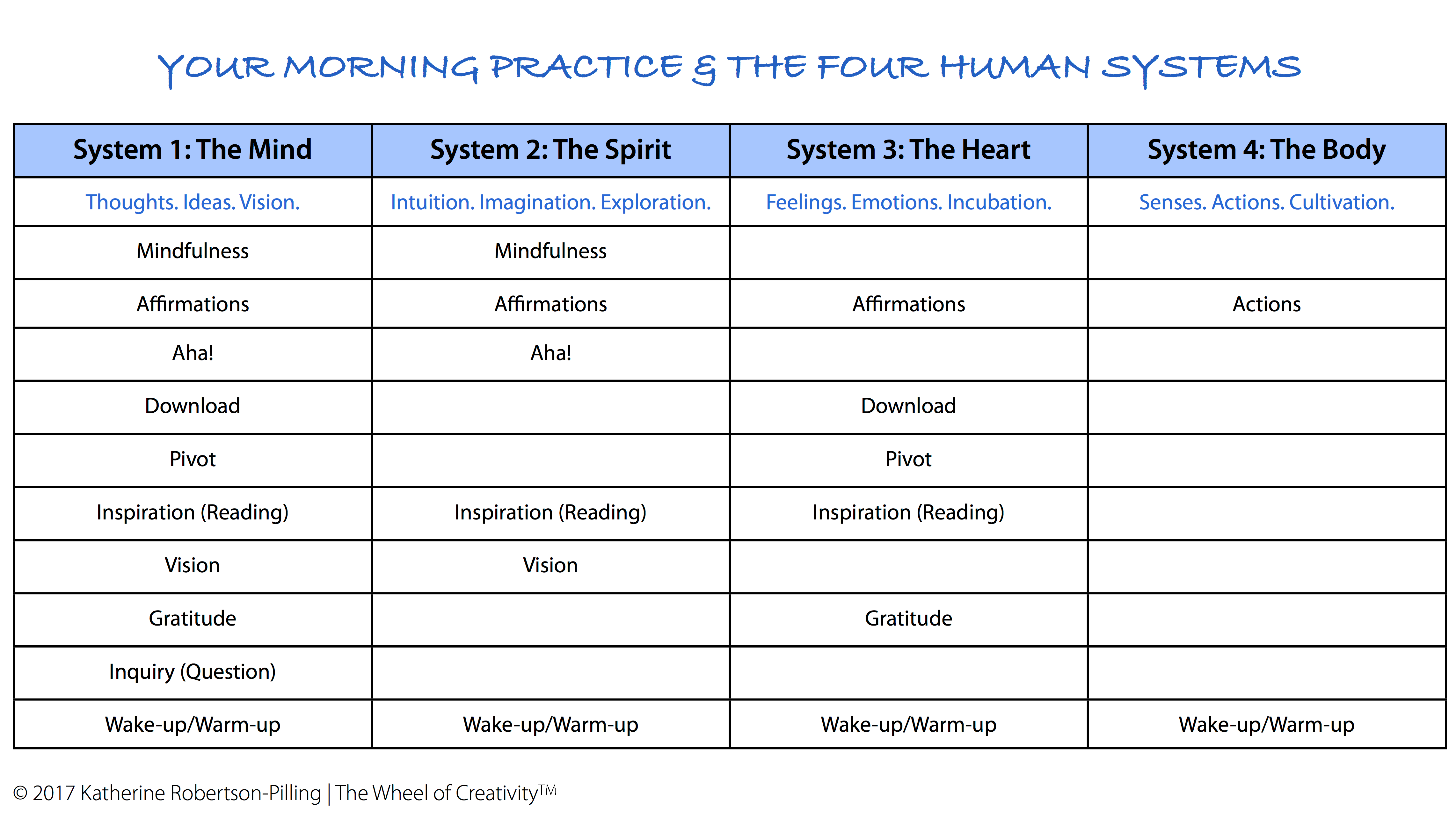 Ignite your imagination. Part two of my four-part series about the Morning Practice, and 10 elements to start your engines for a productive and creative day. I described in my last post the four integrated systems (mind, spirit, heart and body) of every human being and compared them to the systems of a car. While you can get away with periodic maintenance of your car, maintaining yourself is a daily job.
Ignite your imagination. Part two of my four-part series about the Morning Practice, and 10 elements to start your engines for a productive and creative day. I described in my last post the four integrated systems (mind, spirit, heart and body) of every human being and compared them to the systems of a car. While you can get away with periodic maintenance of your car, maintaining yourself is a daily job.
Your morning practice is breakfast for the rest of you.
In fact, these systems are four facets of intelligence. Scientists have proven today that your intelligence is not fixed at birth. If you want to be smarter, you need all of your inputs – your thoughts, intuitions, emotions and senses – at peak performance. And I have found nothing optimizes mine more than the daily morning practice.
How to Integrate Your Four Human Systems
Each of the 10 elements, which I shared in last week’s post, is designed to work with several different systems at once. So not only are you training your mind and your spirit independently, for example, you’re also training them to work together. I’ve broken this out in the diagram below, but don’t take my word for it. See what feels true for you.
 Click to download the above table
Click to download the above table
Einstein observed: “Creativity is intelligence having fun.” Imagination is its playground.
Ignite Your Imagination
Last week we looked at the Mind; this week it’s the second human system, the Spirit. This is where your imagination thrives or withers, and you decide every day by the choices you make. So this week you’ll discover ways to tune up your spirit and ignite your imagination.
How to Use Your Morning Practice
In order to do something with your ideas, you have to get them out of your head. They have to be released into the world, positioned in relationship to what’s already out there, and tested to see whether they work or not. Imagination is the means to do this. Collecting your ideas, getting them out of your head and writing them down is the first step. Once you do this, you can create action steps that allow you to take each next step toward your goal. Writing makes the process manageable and realistic.
If you read last week’s post, I hope you’ve already begun the process of sitting quietly in the morning and writing down a few ideas in your journal. If you haven’t, go back and read that post… and start there today. Always begin with these first two elements: Mindfulness and Aha!
Next step:
- Become aware of the different types of thoughts that come up in the silence.
- Notice when the thoughts coming up are negative. Write these down too, to get any remnants of getting up on the wrong side of the bed out of your head. This is the Download.
- Once you get them out of your head you can see them. Once you see them, you can shift them. The Pivot is directly related to download. Where you see negativity, you can learn to pivot.
So, for example…
“Joanna did that so much better than me.” (The Download) becomes “What can I learn from how Joanna does this?” (The Pivot)
See the difference? The Pivot is a creative response to a potentially crippling situation, and it leads you to a shift to better thinking and a possible solution. It also clears the space for your imagination to play freely.
Actions to take this week:
- Ask a trusted friend for the title of a motivational book, and buy it.
- Spend the first 30 minutes of each day in quiet place for your practice.
- After 15 Mindful minutes, jot down your Aha’s quickly, along with any negativity that needs to be shifted.
- Take another 10 minutes to read a couple of pages in your book and record insights in your Journal.
- Finally, as you stand up from your practice place, exaggerate your movements. Feel that deep stretch through your body and become aware how it frees up space for new ideas and insights to keep flowing through the day. Repeat this through the day as you think of it.
Take a moment to leave a comment about how this is going for you or a question if I can help. And learn from Mr. Einstein: make it FUN!
